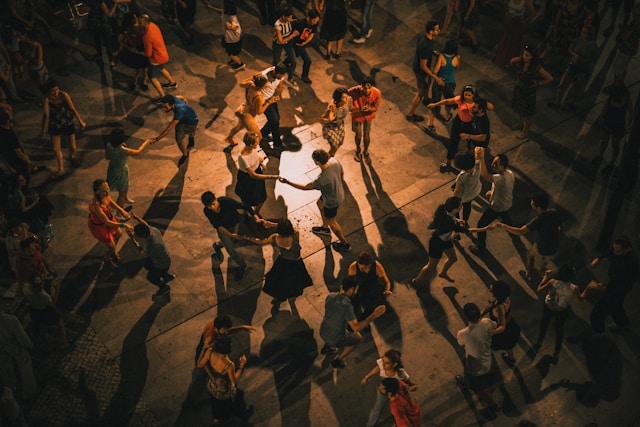Dance has always been a powerful form of self-expression, storytelling, and celebration. Throughout the decades, it has played a significant role in shaping and reflecting popular culture. From early rock ‘n’ roll moves to viral TikTok trends, the evolution of dance in pop culture mirrors changes in music, media, and technology.
This article explores the journey of dance in pop culture, highlighting its most iconic moments, influential figures, and the platforms that helped it evolve from the stage to screens worldwide.
Dance in Early Pop Culture (1950s–1970s)
The 1950s marked the emergence of dance in mainstream entertainment, with rock ‘n’ roll fueling energetic moves like the Twist and the Jitterbug. Television shows such as American Bandstand brought dance into people’s living rooms, making it a daily part of youth culture.
In the 1960s, soul and Motown artists introduced smooth, synchronized moves that reflected their sound. Groups like The Supremes and The Temptations set the standard for choreographed performance.
By the 1970s, disco took over. With artists like Donna Summer and the Bee Gees topping charts, clubs like Studio 54 became cultural hotspots, and dance styles like the Hustle became iconic. Dance floors were where fashion, music, and movement collided, defining a generation.
The 1980s: The MTV Generation
The launch of MTV in 1981 revolutionized how we consumed music and dance. Suddenly, choreography wasn’t just for the stage; it became central to an artist’s visual identity.
No discussion of dance in music videos is complete without mentioning Michael Jackson. His legendary performances, from the Moonwalk to the Thriller routine, set a new standard for pop choreography. These moments became iconic dance moments in pop history.
This era also saw the rise of breakdancing and hip-hop dance culture, born in the streets of New York and quickly spreading across the globe. Films like Beat Street and Breakin’ introduced these styles to wider audiences, showing that dance could be both a personal and political form of expression.
1990s–2000s: Pop Stars and Choreographed Spectacles
The 1990s and 2000s were the golden age of the choreographed pop star. Acts like Britney Spears, NSYNC, and Janet Jackson brought tightly rehearsed routines to MTV, award shows, and stadiums, blurring the line between singer and dancer.
Music videos became cultural events, with visuals sometimes as memorable as the songs themselves. Choreographers like Wade Robson and Fatima Robinson gained recognition for crafting the visuals behind the hits.
During this period, films such as Step Up and TV shows like So You Think You Can Dance and America’s Best Dance Crew made dance more mainstream, giving professional dancers and choreographers a platform in pop culture.
The Digital Age: 2010s–Present
With the rise of social media and streaming platforms, dance in pop culture has entered a new era. YouTube allowed dancers to build global followings, and TikTok has become the epicenter of viral dance movements. Short, catchy dance routines often accompany hit songs, helping them chart globally.
Artists now design songs specifically to spark TikTok dance trends, turning fans into co-creators. Dance is no longer confined to trained professionals anyone with a smartphone can go viral.
Simultaneously, K-pop choreography has reshaped the global dance landscape. Groups like BTS and BLACKPINK are not only known for their music but also for their high-energy, precision-driven dance routines, which are emulated by fans worldwide.
This democratization of dance has expanded who participates in pop culture choreography and how it’s distributed instantly, widely, and interactively.
Cultural Influence and Crossovers
As dance continues to evolve, it also becomes more inclusive and global. Today’s dance trends are a reflection of cultural fusion. Latin, Afrobeat, Bollywood, and traditional folk styles are regularly incorporated into pop music performances, highlighting a more connected world.
For example, artists like Shakira and Beyoncé have popularized dance styles influenced by Latin and African cultures, respectively. Afrobeat artists such as Burna Boy and Wizkid have brought West African moves into the global spotlight.
Dancers are now celebrities in their own right, thanks to platforms like Instagram and TikTok. Influencers such as Charli D’Amelio and choreographers like JaQuel Knight have become household names, showing that dance is no longer just a background element it’s at the center of pop culture.
The Future of Dance in Pop Culture
Looking ahead, the future of dance in pop culture will be shaped by technology. Virtual reality (VR), augmented reality (AR), and artificial intelligence (AI) are already being integrated into live performances and dance content.
Imagine holographic dancers on stage, interactive dance lessons via AR apps, or AI-generated choreography. As these technologies become more accessible, dance will continue to evolve in ways we’ve never imagined.
But one thing remains constant: dance is a universal language. No matter how the medium changes, people will always use movement to connect, express, and celebrate.
Conclusion
The evolution of dance in pop culture is a story of innovation, creativity, and cultural exchange. From swing and disco to breakdancing and viral TikTok trends, each era has left its own mark on how we move and express ourselves.

